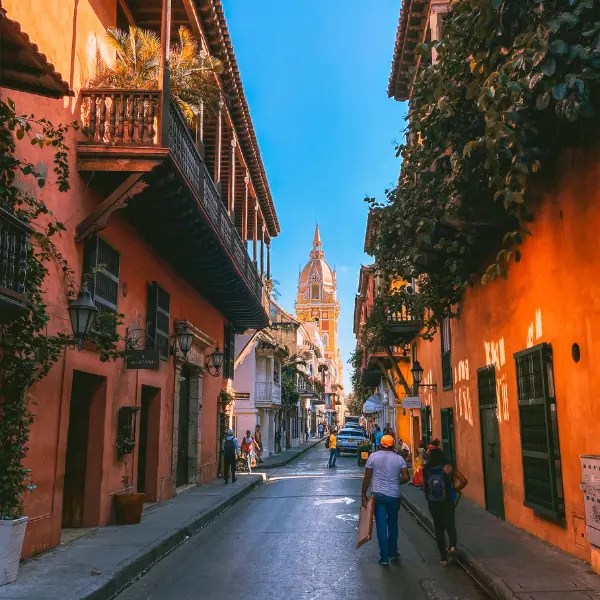

_1703866471.png)
Medellin , Cartagena , Bogota .
_1703866590.png)
Medellin , Cartagena , Bogota .

Cusco , Machu Picchu , Sacred Valley , Lima , Cartagena , Bogota .
The best time to visit Bogotá is during the dry seasons, from December to March and July to August, when there is less rainfall and clearer skies. The city enjoys a mild climate year-round due to its altitude, but sudden showers are common, so carrying an umbrella is always recommended. These dry months are perfect for walking tours, outdoor markets, and cultural festivals that take place across the city.
Top tours in Bogotá include a visit to Monserrate, a mountain that overlooks the city with breathtaking views, accessible by cable car, funicular, or hiking. The Gold Museum (Museo del Oro) is a must-see for its vast collection of pre-Columbian artifacts, while the Botero Museum showcases works by Colombia’s most famous artist. Walking tours of La Candelaria, the historic old town, provide insights into the city’s colonial past and vibrant street art culture.
Visitors to Bogotá can explore colorful neighborhoods, try local coffee in world-class cafés, or shop at artisan markets for handmade crafts. Outdoor enthusiasts can cycle along the Ciclovía, a weekly event where main roads are closed to cars, creating a massive bike path across the city. Nightlife in Bogotá is lively, with salsa clubs, bars, and theaters offering entertainment until late hours.
Bogotá has a subtropical highland climate, with average temperatures ranging from 9–20°C. While it is cooler than many Colombian cities, the weather can change rapidly, with sun, rain, and fog all occurring in the same day. The dry seasons are the best times to visit, but even then, packing layers and carrying a raincoat or umbrella is recommended for comfort.
Bogotá is served by El Dorado International Airport, the busiest in Colombia and one of the main hubs in Latin America. Located about 30 minutes from the city center, it connects Bogotá with major cities worldwide. From the airport, visitors can reach downtown by taxi, private transfer, or shuttle buses, with reliable transportation options available 24/7.
The city offers a wide range of accommodations, from luxury hotels in Zona T and Chapinero to boutique stays in La Candelaria and affordable hostels for backpackers. International chains coexist with charming local options, many of which feature rooftop terraces and views of the Andes. Travelers can find lodging to suit every budget and preference.
Bogotá’s food scene blends traditional Colombian cuisine with international influences. Must-try dishes include ajiaco, a hearty chicken and potato soup, and tamales. Zona G is known for fine dining and gourmet experiences, while Usaquén offers trendy restaurants in a colonial setting. Street food, such as arepas and empanadas, provides a quick and authentic taste of local flavors.
Credit and debit cards are widely accepted in Bogotá, but carrying some cash in Colombian pesos is recommended for taxis, markets, and smaller shops. ATMs are abundant throughout the city, and money exchange services are available at the airport and in major neighborhoods. Tips are customary in restaurants, usually around 10% of the bill.
Bogotá hosts important cultural events such as the Ibero-American Theater Festival, one of the largest in the world, and Rock al Parque, a free outdoor rock music festival that attracts international artists. The city also celebrates its anniversary in August with parades, concerts, and cultural activities. December brings colorful Christmas lights and festive markets across the city.
Bogotá is the capital and largest city of Colombia, located at an altitude of over 2,600 meters in the Andes. It is the cultural, political, and economic heart of the country, offering a mix of colonial history, modern development, and vibrant street culture. The city’s rich diversity makes it a hub for art, education, and gastronomy, attracting travelers from around the world.
Key attractions in Bogotá include Monserrate, La Candelaria, the Gold Museum, and the Botero Museum. The Salt Cathedral of Zipaquirá, located about an hour away, is also a popular day trip. For nature lovers, nearby páramos and natural reserves offer hiking opportunities with unique ecosystems. Plaza de Bolívar, surrounded by historic buildings, remains the symbolic heart of the city.

We're flexible! Postpone your tour with zero cost up to 10 days prior to departure.